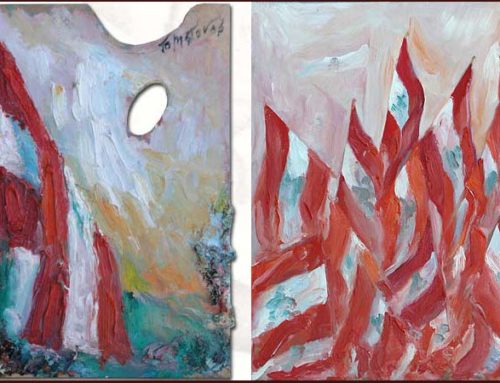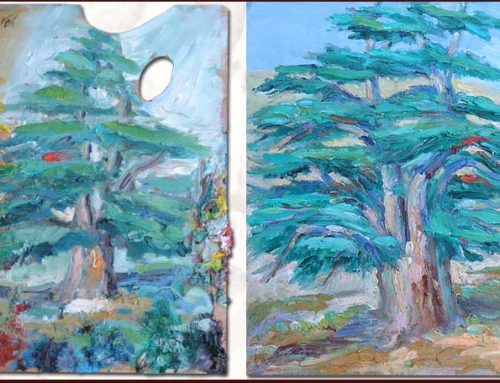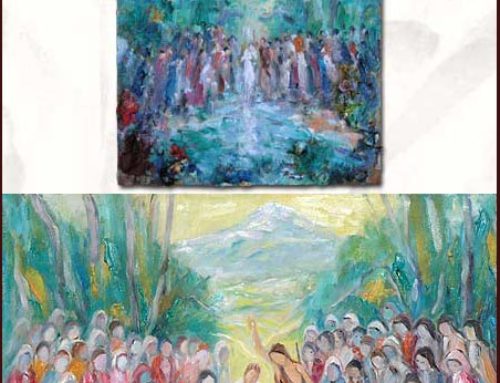The Four-Footed Equine
The Four-Footed Equine – See the recent paintings of the subject, year 2007
From Mesopotamia to the land of Egypt where he was domesticated, venerated by some, despised by others, he has become a character in fairy stories, of legends and of fables. He has revealed to us his secrets, “donkey’s secrets”, his qualities, his faults, he who has been the companion of man for thousands of years.
They say that it was in Egypt, five thousand years before Christ, that the donkey was domesticated.
A four-footed creature, full of kindness, courage, devotion, wisdom, gentleness, humility and simplicity, the steed of the rich and the poor, but the object of insult for his big ears, his donkey’s ears, his stupidity, laziness, ignorance, obstinacy and so on.
In Homer, the Bible, mythology, ancient writings and fables, he has always had his place.
In Rome every year on the 8th of June the Vestal Virgins celebrated a festival during which a donkey was covered with flowers. It was said that Apollo, son of Jupiter and patron of the fine arts, was angry with King Midas and gave him the ears of an ass.
La Fontaine, in his fable of the animals sick of the plague, shows all the powerful creatures turn on the poor donkey so as to spare themselves any suffering. He is mentioned twenty times in connection with the biblical Patriarchs. Those who lived in tents could not do without him, for he was a companion of use for every task.
All the Patriarchs had their donkey for whenever they wanted to travel. Abigail saddled his donkey in order to go and visit David (Samuel, 25). Zorobabel returned to Jerusalem humbly on his donkey (Zachariah, 9: 9). It was when he was engaged in a search for his lost asses that Saul was anointed king by Samuel. On seeing three thousand Philistines coming towards him, Samson picked up the jaw of an ass and killed of them a thousand (Judges, 15: 9, 15).
The water color of Flameng showing a donkey carrying provisions and ammunition to soldiers at the front is familiar to all.
The great historian Michelet devotes to him a whole chapter:
“That other demon was to go down throughout Antiquity, and the Middle Ages as well, the cunning Bel-Phegor of Syria, the long-eared and lascivious donkey of wine, ever-lustful, appearing alongside no less vivacious but more insidious.
“Each year this god left Armenia in barrels loaded on craft of planks bound with leather on which a donkey was placed, and made its way down the river Euphrates. In Chaldea, which had only inferior palm wine, the nectar of Armenia was drunk with devotion. The planks were sold, while the donkey would take the leather to the uplands. This amiable animal, pride of the East, which every year like a royal magus entered Babylon in triumph with its joyous harvest, was feasted and honored. He was given the title of Lord, Bel, Baal. He was given the respectful name of Bel-Peor, Lord Donkey.
“He was treated with even greater respect in Syria, where according to the prophet his coarse gaiety and amorous gifts, his superiority over men, made him the wonder of the Syrians. In fact her himself was a prophet, giving voice under Balaam. To this day the mountain where he spoke is called the Donkey. In fact he is a demon, Bel-Phegor, the demon both impure and kind, who is of use to everybody for everything, and lets himself be bridled and ridden.
“It was on Donkey Mountain that the angels themselves, infected by Bel-Phegor, lusted after the daughters of men. In the desert there was celebration for the Feast of the Donkey. He avoided Egypt, without pity he was charged with back-breaking burdens. He stepped out boldly to the North and to the West, preaching the culture of the vine, to give wine, little brother of Love. The donkey went everywhere, and would have been Priapus and Bacchus, had his strong personality allowed it.”
As for myself, I discovered him entirely by chance, although in fact I have often met him, reading his memoirs, with his adventures, his thoughts his deeds and his reflections. I found in him real learning so that he drew my attention to the point of my treating him as a subject in some of my paintings and composing some poems in his honor. Perhaps he serves as a mirror in which one often sees oneself.
Once upon a time every home in Lebanon had its donkey and one met him everywhere, in the alleys and in the fields. He knew perfectly all the ways, storing them in his memory like a computer, returning by himself to his stable and his manger and just signaling his presence so someone would come and take his load off his back. He was there ready for work in the fields, for plowing, for helping with the grape harvest, bringing in the crops, carrying from the mill and from the fountain – and well smartened up he was a mount for any journey. Firm and undaunted, he kept perfect balance and never slipped.
There is in Lebanon a whole region named after his kind, the region called The Ass, al-Debeh, the very area where the alphabet was invented.
For mapping and tracing the routes he is a master, a pioneer; he goes ahead and one can trace behind him the future path and its every short cut. He is the guide of the flocks and of the caravans, taking charge and in the lead.
Quite unjustly is he accused of laziness, with so many stories and poems about him, from La Fontaine, Francis Jammes, Mme. De Ségur, Juan Ramon Jiménez to mention only some. Platero and Myself, memoir of a donkey, Donkey’s Skin, Perrault. Should there not be a science, “Assinology” to his memory?
There is no violence about him and he does not want war, even though it is he who supplies the troops. In Lebanon, everyday life is impossible without him. As for the stories about him and all his adventures, they are enough to fill an encyclopedia.
Just consider this. Where I live there is a wealthy family that owes all its fortune to a donkey, and this is how.
During the Ottoman occupation, early in the twentieth century, the Turkish Army, which was taking away people, cattle and goods of every description, and wanted to carry the tax revenues, then in the form of gold coinage, from Beirut and Mount Lebanon to the port of Tripoli, commandeered every donkey and ass to be found, and among them an ass from Bentaël (Daughter of El) that had a baby not yet weaned. Going back to Tripoli during the night, the ass recognized the road to her stable and driven by maternal instinct she left the caravan and turned eastwards towards her village. Early in the morning, her owner was quick to notice that she was burdened with sacks of gold. So in the greatest secrecy, he dug a hole, buried the money and a little further away dug a bigger hole in which he dropped the ass after slaughtering her for fear of the Ottoman authorities who might come in pursuit.
In Greek legend one hears that an Athenian rented a donkey to carry his luggage to Megarios. During a halt, he sat in the shade of the donkey, but the driver asked for extra payment, declaring that he had rented out the donkey but not its shadow.
Two donkeys were boasting of their abilities. The first said, “Don’t you find it stupid and unjust for men to abuse our name, calling anybody ignorant a donkey and describing our singing as braying, when in fact it is more enchanting than the nightingale’s song?” From Lambert we have many cartoons and short stories, since for these the donkey makes a good subject.
In Lebanon the donkey is part of our heritage. In the Gospel he carries Mary from Nazareth to Bethlehem and then to Egypt and back. He enters Jerusalem in splendor, bearing the Son of God as celebrated on Palm Sunday. The crowd spread their cloaks under his feet, with palm leaves and olive branches.
The poet Charles Péguy, to illustrate the verse of the prophet Isaiah (1; 3)about the ox and the donkey before the cradle at Bethlehem, imagines them talking gravely together about the inconceivable grandeur of the event. Under the eyes of the ox and of the ass, the child is bathed in the purest light, while its two guardians who are witnesses blew on his little fists to keep them warm. The ass is wondering by which road paved with palms it will take when it bears the child of Bethlehem through the crowd to Jerusalem.
I have often sung to myself the poem of Francis Jammes:
I love the donkey so gentle,
Tripping under the holly trees
With dainty trot.
In his Letters from My Mill (Lettres de mon moulin), Alphonse Daudet takes delight in relating the terrible revenge of the pope’s donkey on a lout in Avignon.
Treatment of the donkey is covered by the official decree nº 325 issued by the Executive Authority on 3rd June 1936. This decree recognizes him the following rights:
Maximum burden:
– for a donkey 90 kilos.
– for a mule 125 kilos.
– for a horse 125 kilos.
– for a camel 225 kilos.
The number of persons in a carriage with pneumatic tires and drawn by a donkey is limited to six.
All such vehicles should be in good condition so as not to cause hurt to the beast.
The use of a whip is strictly forbidden unless the whip is of fine hemp and used simply to move the animal.
Leather or braided whips, and ones with metal in them, are forbidden.
The muleteer who leads the animal should be on foot on the left side. He must not make the animal suffer and he is obliged to give food and water within a period not exceeding twelve hours, under pain of being brought to justice; the penalty imposed will be drawn up in two copies, one for the tribunal and the other for the archives.
The penalties are indicated in paragraphs 2, 3, 5 and 13 in decree 7 and 8 if the vehicle has no brakes, in 8 if the whip is hard and in 12 and 13 for the case where the animal has been deprived of food and water or mistreated.
It is absolutely forbidden to make use of a goad.
All this was decided before the setting up of societies for the prevention of cruelty to animals around the world.
Master Donkey, all due honor and respect!
Four-footed friend rendering many a service, he poses at present for his picture, an excellent model. He holds himself in ways that are almost religious, meditating, and is there on canvas in a new plastic existence, not only flesh and blood and bone but also warmth, color, and light, a poem that loses itself in the mists of time.
Joseph Matar
All rights reserved © LebanonArt
Translated from French: K.J.Mortimer

Yvan with his dreams – Yvan rêveur – 46 x 38 cm
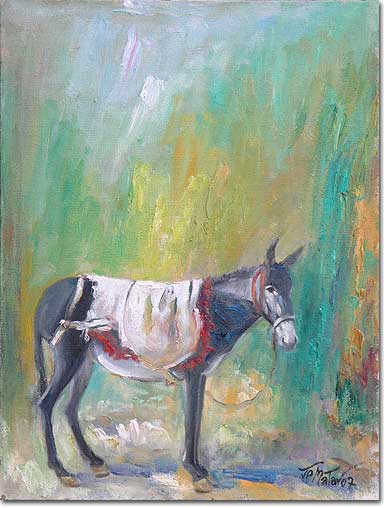
The thinker – Penseur – 61 x 46 cm
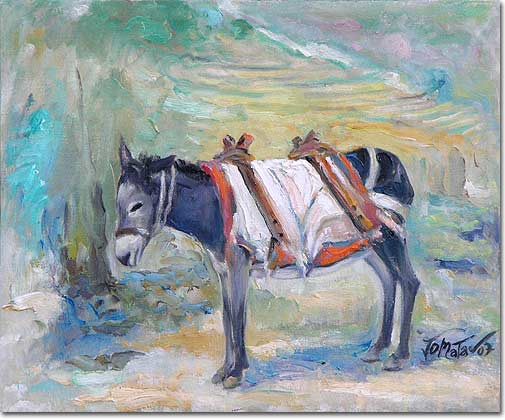
Chaker at rest – Chaker au repos – 38 x 46 cm
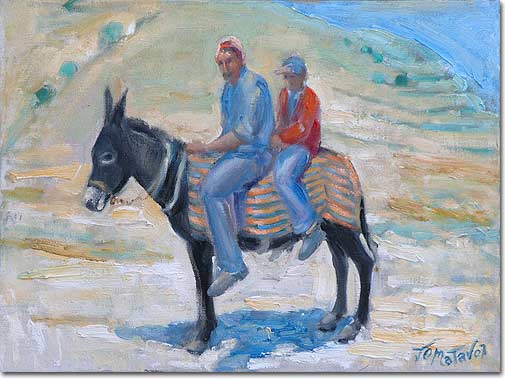
Return from fields – Retour des près – 34 x 46 cm
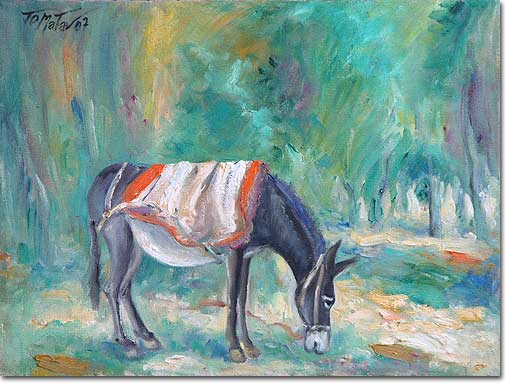
Said Grazing – Said, broutant – 46 x 61 cm




